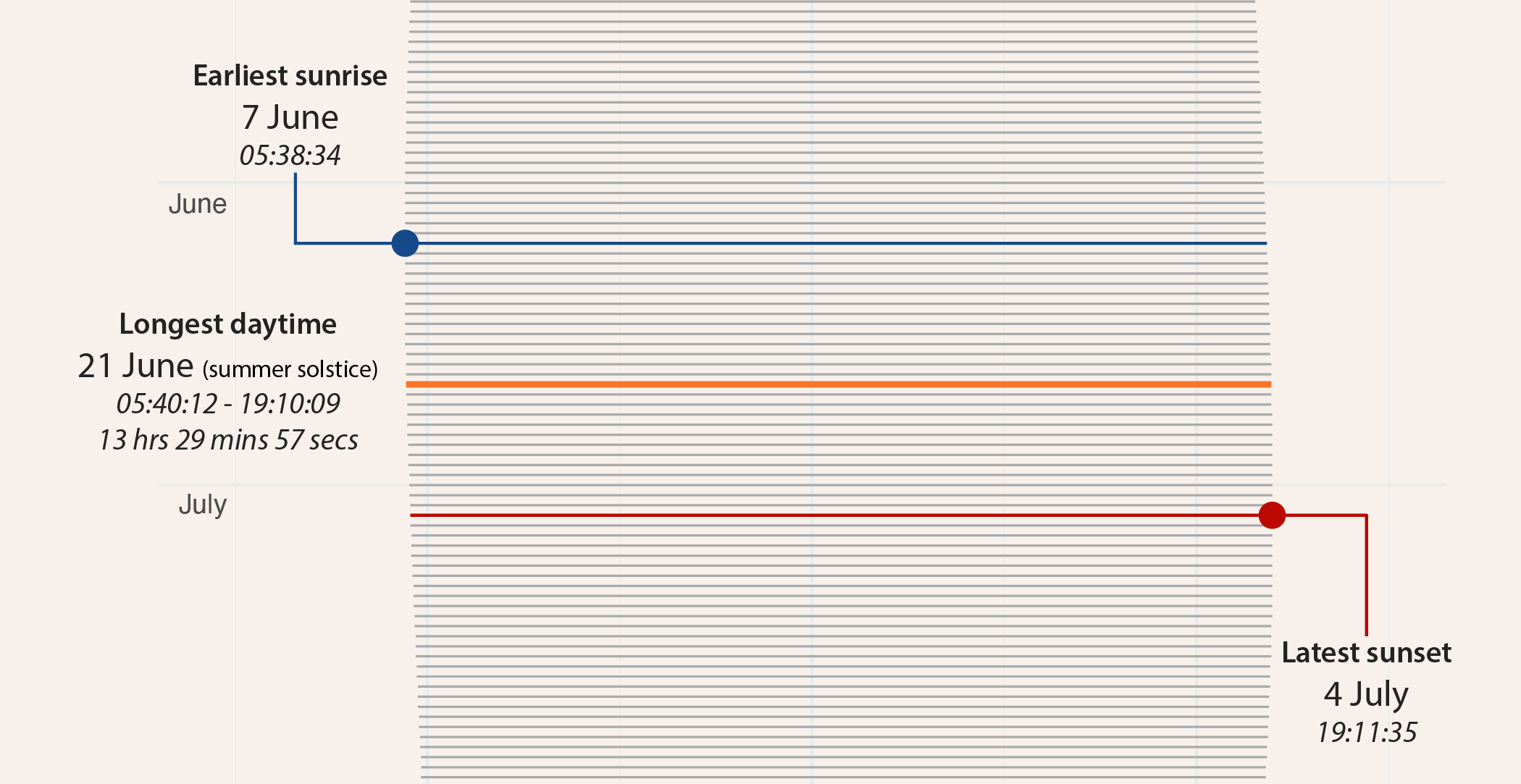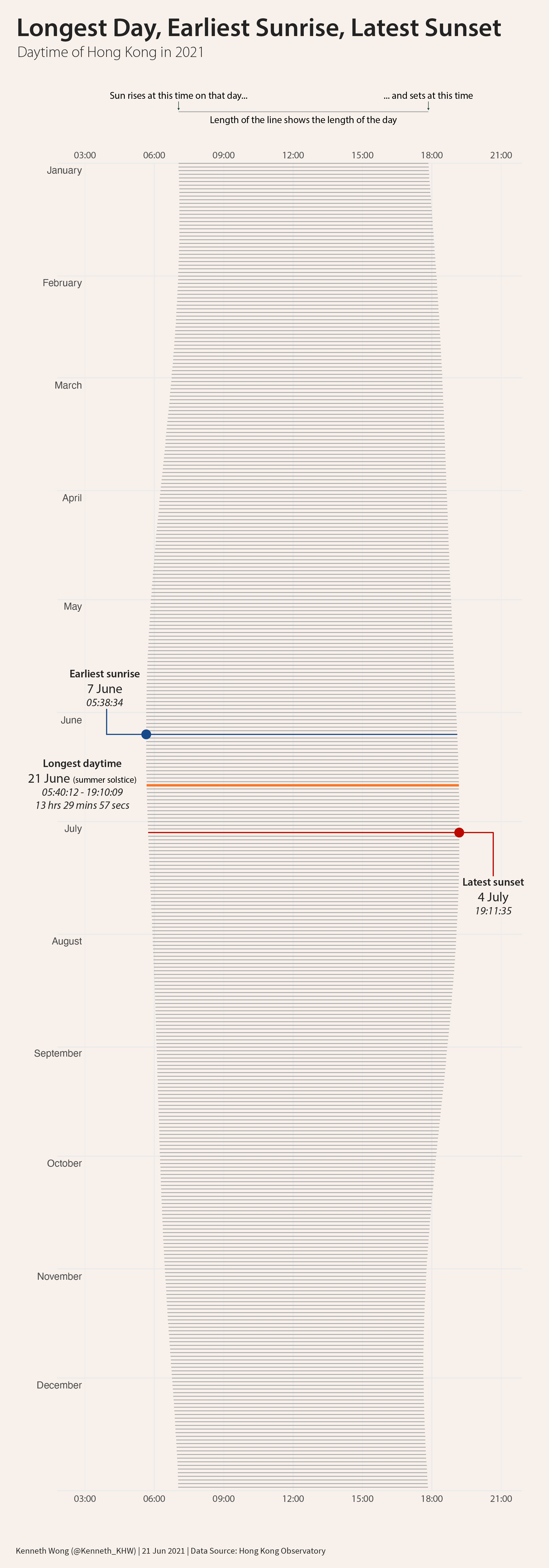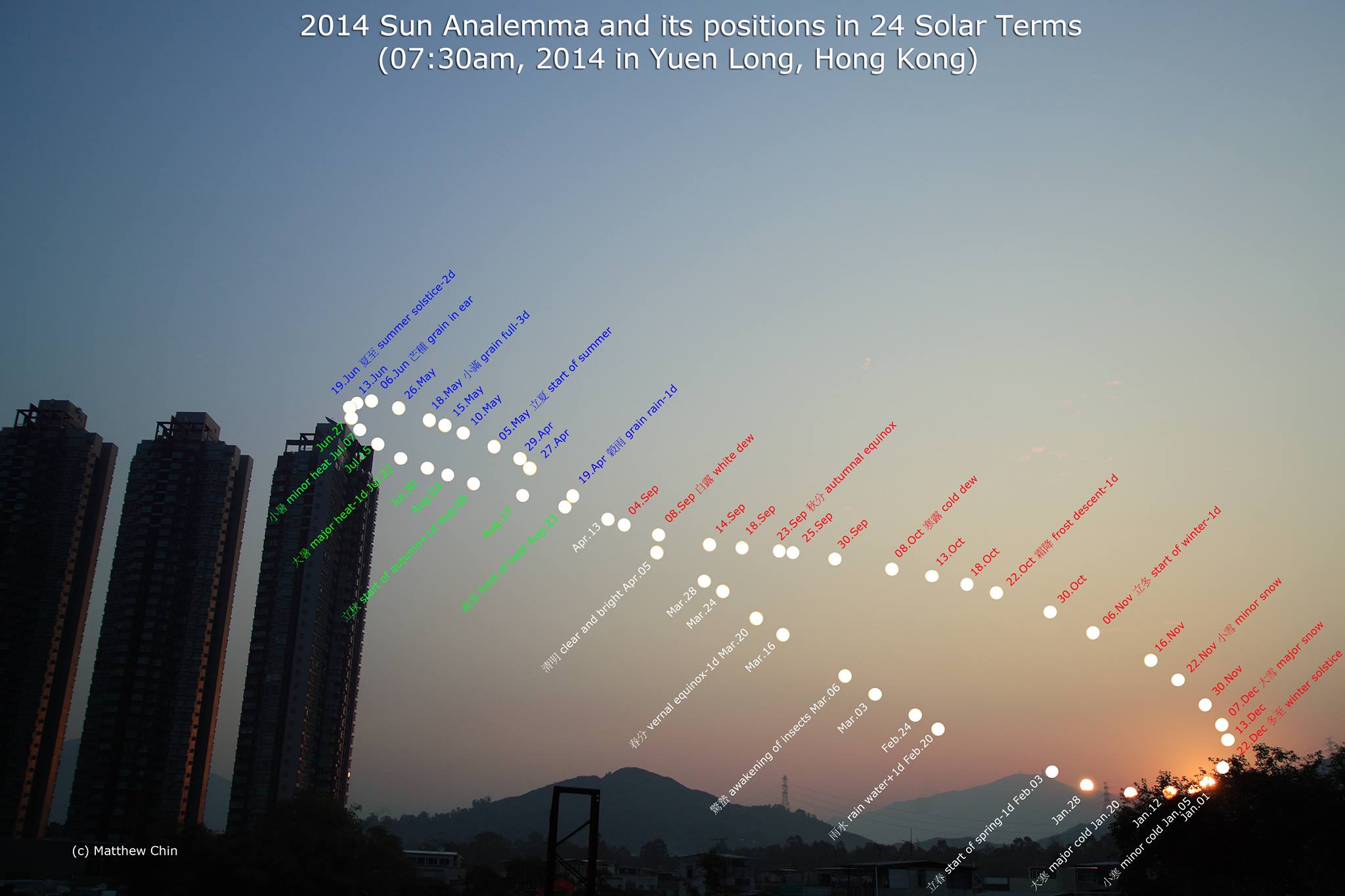June 25, 2021
Visualising sunrise, sunset and daylength around summer solstice
567 words | 3-min read |

I spend a day creating a quick chart visualising the day length of Hong Kong throughout the whole year.

TBH, I am not quite satisfied by the result as the day length line looks to packed and the trend of the differences is not that strong. I originally hope people could spot the differences of the sunrise time between the date of earliest sunrise and summer solstice immediately at their first glance to the chart.
Yet, the difference is only about 2 mins - the earliest sunrise is at 05:38, while sunrise at summer solstice is at 05:40. It is nearly indistinguishable on the chart when the time axis spreads along 18 hours (03:00 to 21:00). Some quick maths - the time axis is around 6 inches. Thus, the differences of 2 mins on the chart is only around 0.00185 inch (0.047 mm)! I should choose a city located somewhere at 50°N, or even in polar region next time.
But this post is not really about the chart, it’s more on the background of why I want to make this chart.
Background
Longest day = earliest sunrise + latest sunset?
One of my misunderstandings about summer solstice in my childhood (well, probably also during youth) was that summer solstice is also the day with earliest sunrise and latest sunset.
I knew summer solstice is the day with longest day time (i.e. the sun shines on the sky for the longest hour around the whole year). Then I “systematically” believe that also means the day with earliest sunrise and latest sunset.
Not until I read a book on weather and astronomy. There is a section pointing that these three concepts are different things. I never checked the data by myself, and making this chart is somehow convincing myself this is true.
Unfortunately, I still don’t understand the reasons and sciences behind why they are different things (I’m not good in physics and maths, I admit.) after watching several articles and videos (listed in the end). Still, somehow I understand it is caused by the earth’s orbit and tilt of rotational axis. That’s the most I could grasp.
Maybe I will revisit this blog if I suddenly understand the science before.
Digression I: Analemma
After knowing the position of sun of the sky is not the always the same, I learn the term Analemma - a diagram showing the position of the Sun in the sky as seen from a fixed location on Earth at the same mean solar time, as that position varies over the course of a year.
I found this analemma of Hong Kong fascinating.

Digression II: Daylength across Japan
I am quite surprised by the differences of sunrise time and day length when rambling on timeanddate.com to search for the time of sunrise and sunset.In Japan, sunrise and sunset of Kagoshima (31.6°N, 130.55°E) are 05:13 and 19:25 at summer solstice, while that of Sapporo (43.0°N, 141.35°E) are 03:55 and 19:17. Their daylength are 14 hrs 12 mins and 15 hrs 22 mins.
Japan does not have multiple time zones like USA. So the differences of the time of sunrise across the longitude is more than one hour.
Some Readings
Why Isn’t the Year’s Earliest Sunset on the Winter Solstice?
https://www.timeanddate.com/astronomy/equation-of-time.html
What is the summer solstice? Here’s what you need to know.
https://www.nationalgeographic.com/science/article/what-is-summer-winter-solstice-answer-might-surprise-you
Why the sunrise is still later after the winter solstice shortest day
https://theconversation.com/why-the-sunrise-is-still-later-after-the-winter-solstice-shortest-day-77628